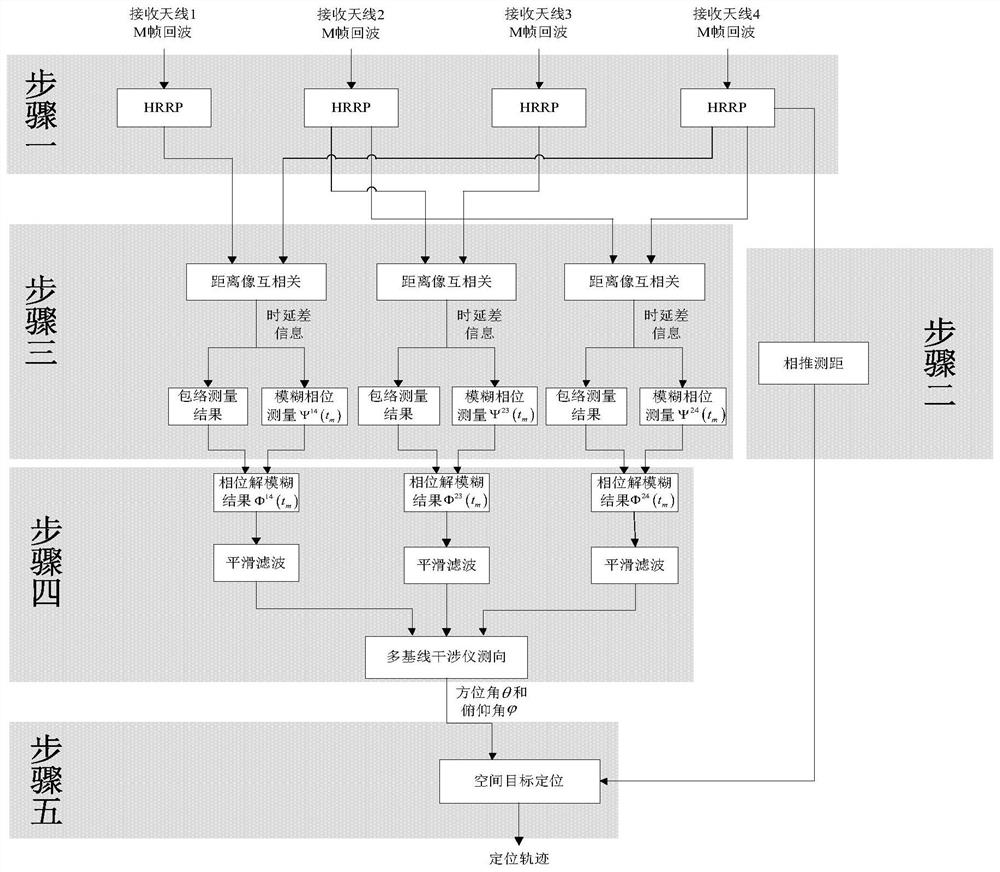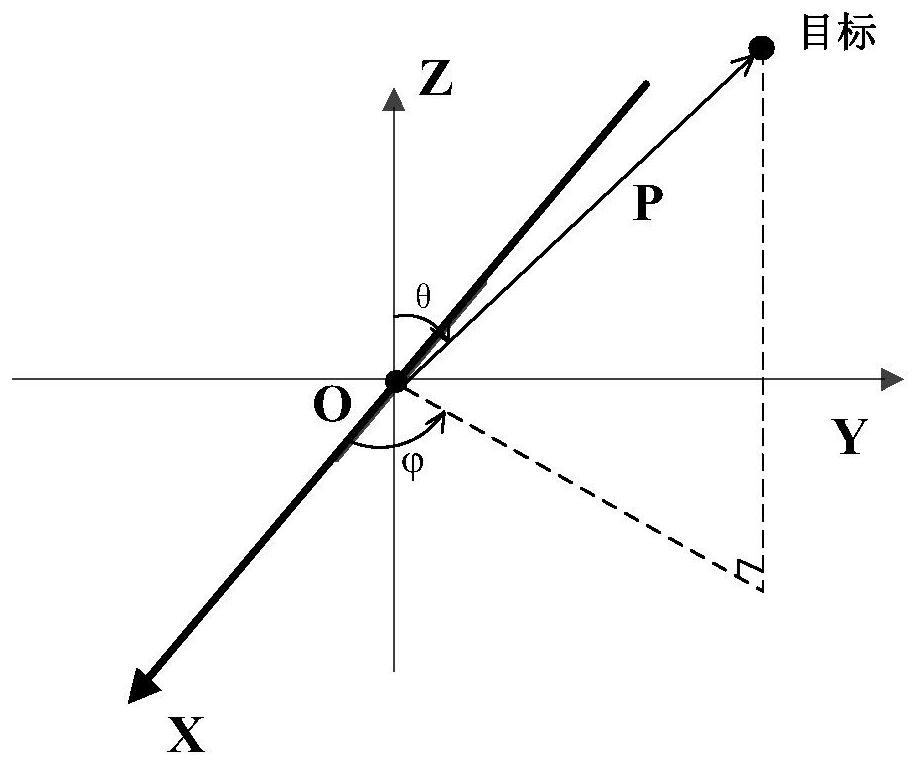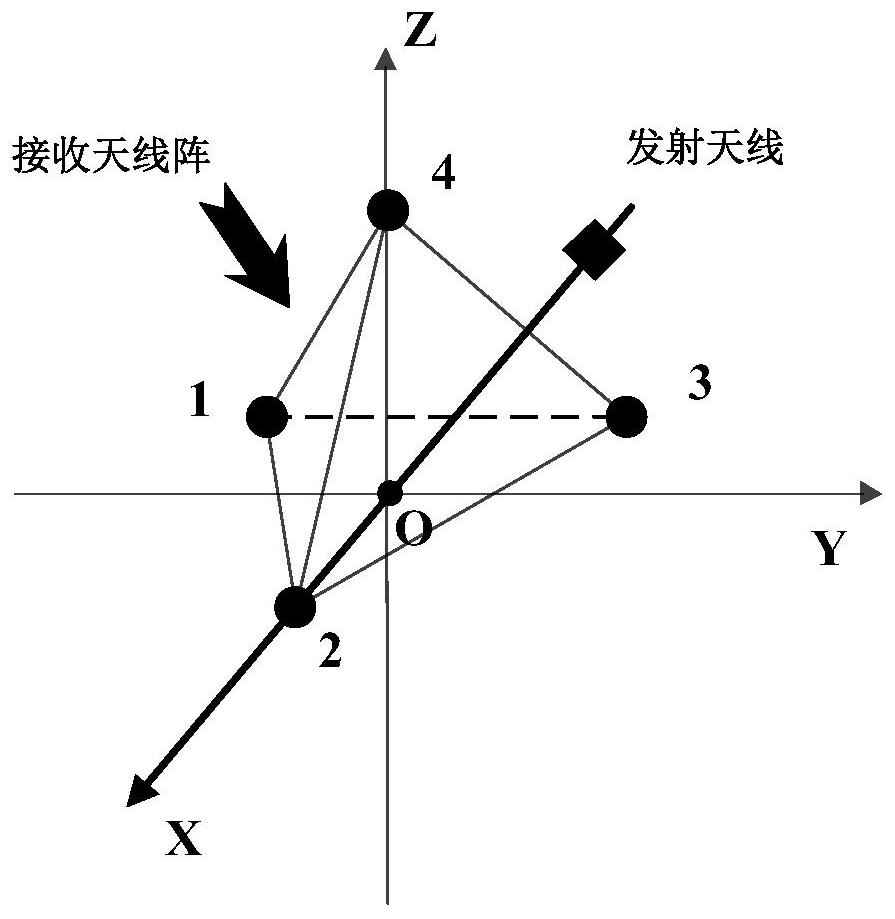A Broadband Radar Target Location Method Based on Phase Inference Range and Phase Inference Angle
A target positioning and broadband radar technology, applied in the field of signal processing, can solve the problems of long coherence time, large amount of calculation, and measurement accuracy susceptible to target fluctuations, and achieves the requirements of overcoming the deterioration of accuracy and reducing the signal-to-noise ratio. The effect of improving the performance of spatial target positioning
- Summary
- Abstract
- Description
- Claims
- Application Information
AI Technical Summary
Problems solved by technology
Method used
Image
Examples
Embodiment Construction
[0033] Aiming at the problem of deterioration of positioning accuracy of traditional methods in the case of short baselines, the present invention proposes a high-precision positioning method for broadband radar targets based on phase estimation distance and phase estimation angle. The invention will be described in detail below in conjunction with the accompanying drawings.
[0034] The inventive method is realized by the following technical solutions, and the realization flow chart is as follows figure 1 Shown:
[0035] Using the antenna configuration of single transmission and multi-reception, the transmitting antenna transmits RF broadband waveforms, and multiple receiving antennas receive echoes at the same time, and the transmitting antenna and each receiving antenna channel form a transceiver channel. Denote c as the speed of light, f c is the center frequency of the transmitted signal, B is the bandwidth of the transmitted signal, T is the frame length of the transmit...
PUM
 Login to view more
Login to view more Abstract
Description
Claims
Application Information
 Login to view more
Login to view more - R&D Engineer
- R&D Manager
- IP Professional
- Industry Leading Data Capabilities
- Powerful AI technology
- Patent DNA Extraction
Browse by: Latest US Patents, China's latest patents, Technical Efficacy Thesaurus, Application Domain, Technology Topic.
© 2024 PatSnap. All rights reserved.Legal|Privacy policy|Modern Slavery Act Transparency Statement|Sitemap



